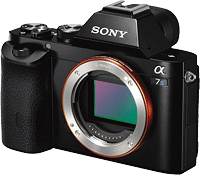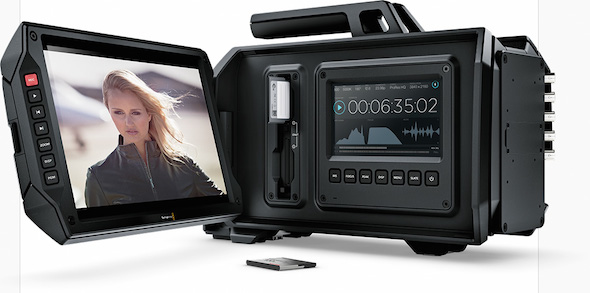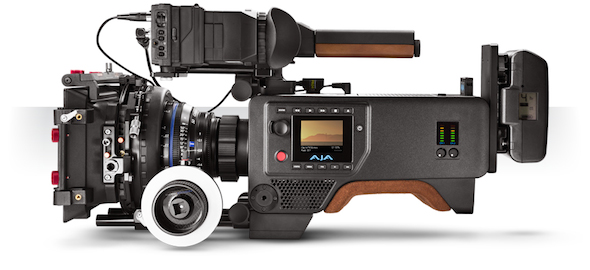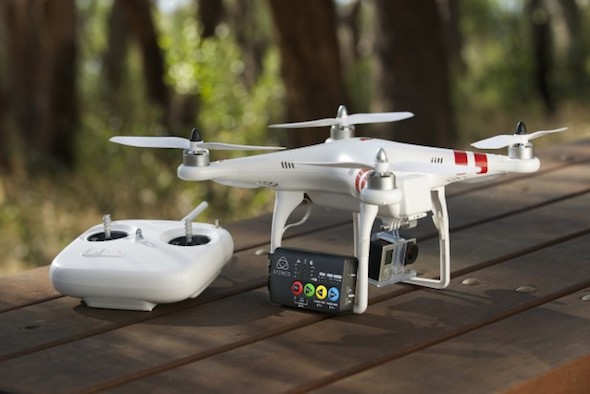We sort through the tidal wave of 4K coming out of NAB 2014
posted Tuesday, April 8, 2014 at 11:16 AM EST

The National Association of Broadcasters show (NAB) is in full swing, bringing heaps of new 4K camera and accessory announcements. Even if you're mainly a stills photographer, there's plenty of cool gear to check out, and some of these fresh ideas that might someday, in some form, trickle down to cheaper system cameras. Here’s a quick rundown of what’s been happening with high-res video these past few days.
Sony announced the new Alpha 7S mirrorless full-frame camera in the lead-up to NAB, and it came as a bit of a surprise. In most respects, it’s very similar to the still-fresh A7 and A7R, but it’s built around a brand-new, 12-megapixel, full-frame sensor. While that's an unusual step back from the trend of still-rising pixel counts, it should be a major boon for low-light performance.
And, oh hey, it’s also capable of shooting high-quality 4K video without line-skipping, pixel binning, or downsampling. There’s an interesting caveat, though: The A7S itself can’t actually process or record 4K video, so videographers will need to use an external recorder. No pricing or availability info is available yet. Keep an eye on our running preview of the A7S for more details as they emerge.
Blackmagic unveiled two new 4K video cameras at NAB, both with some of the unexpected flair that we’ve come to expect from the company’s designs.

The attention-grabber of the pair is the URSA. It has a host of features aimed at pros, like two built-in recorders, three screens, and interchangeable sensors. It weighs 16.5 pounds with the default Super 35 4k sensor block. EF- and PL-mount versions will be available in July, for about $6,000 and $6,500 respectively. EOS HD has a particularly critical take on the URSA, which is worth a read if you’re wondering what the heck is the point of a camera like this.
Then there’s the more “traditional” Blackmagic Studio Camera, designed for live production. It has a massive viewfinder, a Micro Four Thirds mount, and comes in HD and 4K configurations, the latter of which will cost about $3,000 when it comes out in June.
JVC was already ahead of the 4K curve, having released the world’s first handheld 4K camcorder back in 2012, as well as an F-mount 4K video camera just last year.
At NAB 2014, they’re showing off prototypes for three new 4K camcorders. Two are designed for digital cinema: A shoulder-mounted camera with a PL lens mount, and a compact model with a Micro Four Thirds lens mount. Also on display is a two-piece “mini” model built for professional aerial videography. All three prototypes are designed around Super 35mm-format sensors, a bit larger than the chips in their previous 4K cams.
For now, none of them have pricing info, release dates, or even a promise that they’ll actually be released. But we do know that JVC has officially joined the Micro Four Thirds group, and plans to release more products with MFT lens mounts.

AJA is also joining the party with the 4K CION, a $9,000 PL-mount 4K cinema camera. It’s yet another high-end, high-res option, falling somewhere in between the new Blackmagic URSA and the Red Dragon Scarlett.
Atomos has a pair of cool new 4K recorders on display. The Shogun is a portable recorder and monitor, and Atomos seems to be aiming it towards use with smaller 4K cameras like the Sony A7S, Panasonic GH4, and Canon C500. It’ll cost under $2,000, but won’t be available until around September or October.

Then there’s the tiny Ninja Star recorder, which will cost $295 when it comes out in May. In the press photo, it’s mounted to a DJI Phantom quadcopter—subtle hint, Atomos.
Which of these new cameras do you think is posed to make the biggest impact? Which features would you like to see in a stills-oriented camera?
(Via Cinescopophilia, DPReview, Engadget, No Film School)